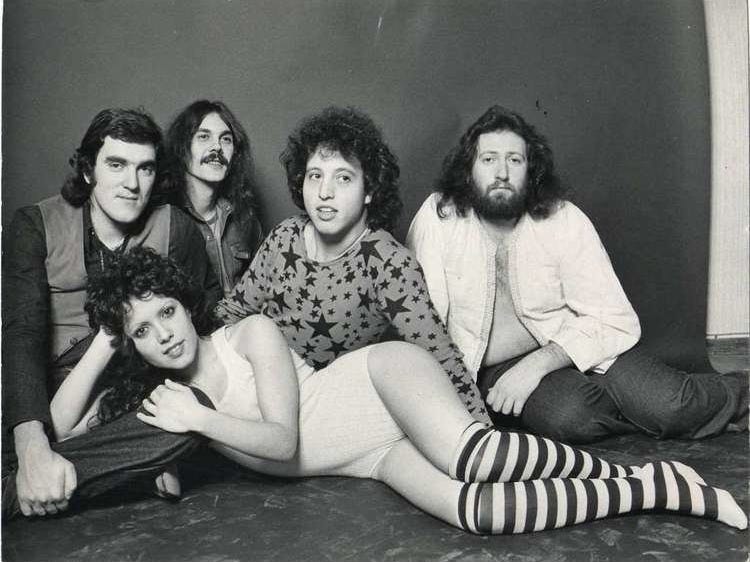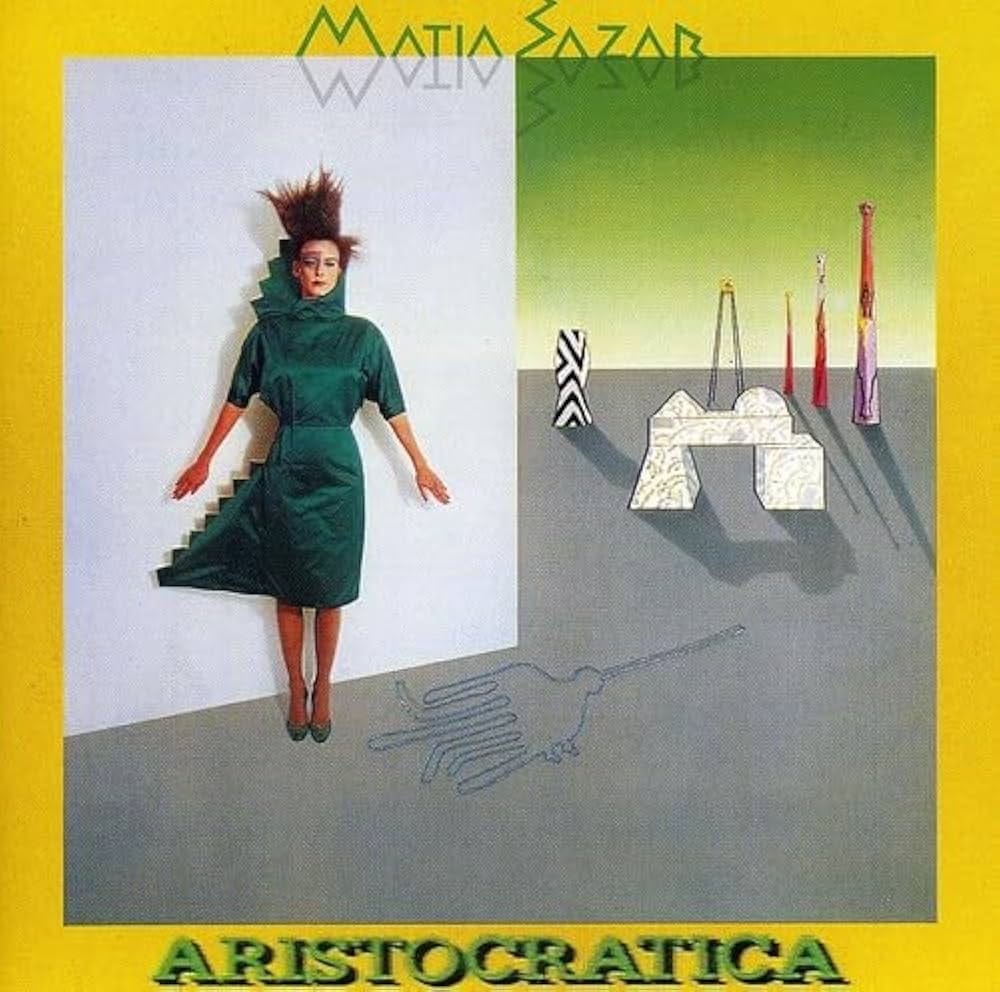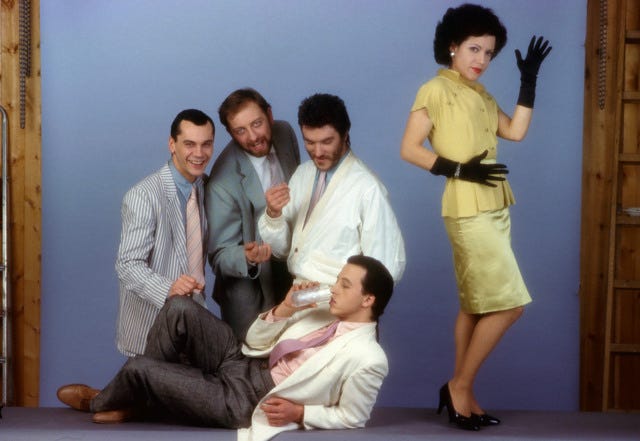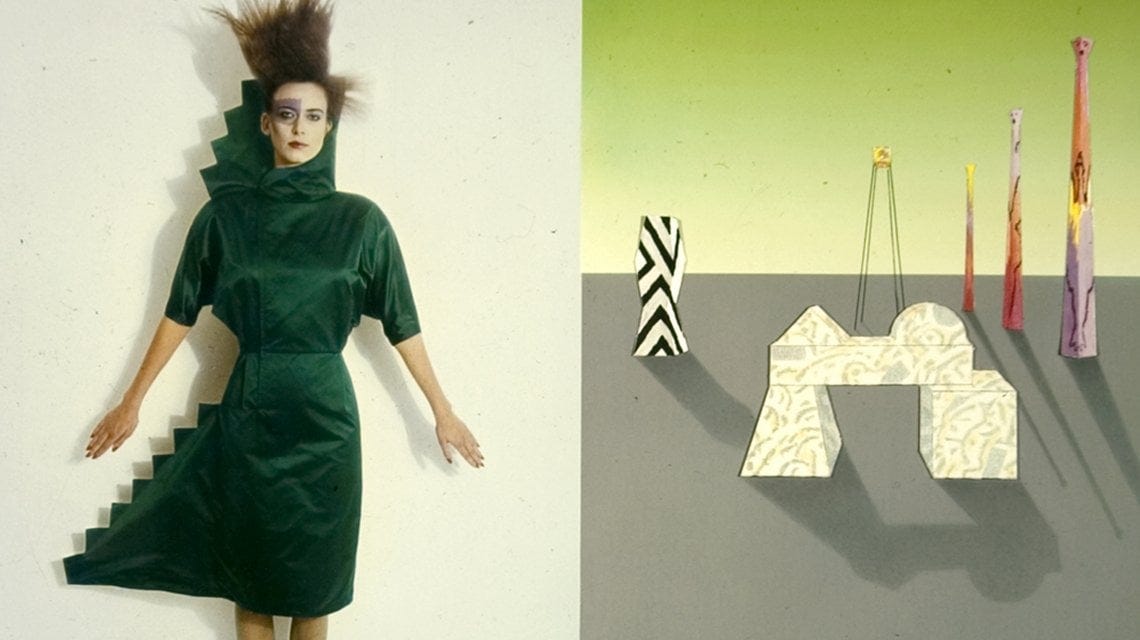Matia Bazar Pioneered Future Nostalgia
How the juxtaposition of operatic vocals and electronic instruments created their emblematic sound
Italian band Matia Bazar defined the soundscape of the mid 1980s thanks to a combination of electronic music, lush synths, and the vocal range of the lead singer Antonella Ruggiero, an agile soprano who could easily pull off pop, gospel, jazz, disco, and contemporary sounds.
The changing formations over the years also contributed to the band’s ever-evolving style and genre.The original formation had all the instrumentalists, Carlo Marrale (voice and guitar), Piero Cassano (keys and voice) and Aldo Stellita (bass and chorus) come from the band Jets. When Cassano left in 1981, Mauro Sabbione took over temporarily, only to make room for composer and keyboardist Sergio Cossu, a pioneer in the usage of the MIDI protocol.
Established in Genoa in 1975, Matia Bazar were known for experimenting even in their earlier work, which some deemed textbook-Italian pop that then veered into rock. Their 1976 track “Limerick” contains traces of proto disco, while their 1977 Sanremo entry “Ma perché” and “Gran bazar” are pure dancefloor hits. Their Eurovision entry “Raggio di Luna” might have a nostalgic vibe at first, but a closer listening will definitely lead you to perceive it as a precedent to the future nostalgia they developed in the mid 1980s. Below, we highlight their three seminal 1980s albums.
Tango (1983)
Tango is the synthesis between melody and technology. The lead single “Vacanze Romane,” their Sanremo entry for 1983, perfectly combines retrofuturism and nostalgia, both via the imagery it describes, the sound, and the lush use of synths. It was disruptive in that it united a classically-trained voice such as Antonella Ruggiero’s with the electronic arrangements of Mario Sabbione’s keys. Its lyrics cite a Roman Holiday, La dolce vita, The Merry Widow and Carlo Lombardo’s Il paese dei campanelli, and evoke a past grandeur of the city. “Despite being composed of micro-plagiarisms of songs from the 1920s and 1930s, it has the vigor of a total work of art,” writes the music critic Demented Burrocacao in Italian futuribili.
Interestingly, their original choice for Sanremo was the track “Palestina,” which combines Middle-Eastern influences with electronica, and which Ruggiero used to perform live alternating raising her fist and outstretching her arm in a Roman salute.
And while “Scacco un po’ matto,” and its vocoder that splits Ruggiero’s voice is pure Europop, “Elettrochoc” anticipates both techno and intelligent dance music: its seemingly delirious lyrics, conveyed by four characters suffering from various mental-health conditions, condemn electro-convulsive therapy.
The title track “Tango nel fango,” uses the dance styles such as tango and milonga as verbs as a way to portray a self-contained seduction. It’s a markedly retro track, almost like a merry-go-round tune.
From a visual-culture perspective, “Il Video Sono Io” yielded a meta-commentary-like and genre-defining music video, which appears explicitly postmodern “in its attitude towards design, its use of colours, the reflexion on the possibilities and the nature of television,” as stated by Bruno di Marino in the essay “Pride and Prejudice”. A Brief History of the Italian Music Video
Aristocratica (1984)
Released in 1984 Aristocratica dials up experimentation. Tango is still indebted to the Italian music tradition (melodies you can sing, lyrics that are not too cryptic and fairly easy to remember), while Aristocratica is fully projected into the future. It also marks the entrance of Sergio Cossu as a session player. The lyrics are nothing short of cryptic, the arrangements can easily be labelled as proto techno, and experimentation is just free flowing. The band brought to life an extraordinary album that was both innovative and prophetic, blending music, art, technology, and design
“Sulla Scia” almost feels like a continental rave anthem from the 1990s, while “Carmen” channels the atmospheres of Spain. “L’ultima volontà” features Garbo, one of the most eminent representatives of the Italian new wave, who made a conscious effort to emancipate himself from Italian pop. “Mosca Helzapoppin” quotes Howard Blake’s “Walking in the Air” while also referencing the 1941 musical comedy Helzapoppin’.
For the Japanese market, they issued the single “Cercami Ancora” (with Aristocratica as its B side), as it had placed second in Tokyo’s World Popular Song Festival or Yamaha Music Festival. In a less theatrical manner compared to “Vacanze Romane,” “Cercami Ancora,” cleverly combines synths with a crowd-pleasing Italian-style melody, complete with an operatic chorus—pure catnip for a foreign audience.
The Japanese market also saw a reissue of their earlier album Berlino, Parigi, Londra, with the previously unreleased single “Il treno blu,” a synth-powered waltz melody that, Demented Burrocacao assesses, combines Asian pop with German minimalism (see the recitativo-like Eins Zwei Drei, which is actually the recreation of the waltz tempo).
Melanchólia (1985)
With the release of Melanchólia, Matia Bazar started collaborating with producer Celso Valli, a disco-music veteran, and with Sergio Cossu at the keyboard in an official capacity. While this partially results in scaling back with experimentation, what is gained is hints of italo disco. The anthem-like “Ti Sento” aptly combines various genres, and allows Matia Bazar to chart internationally. There are numerous versions of the song: In 1995, Irene Cara covered it with the title “You Need Me,” in 2000 the Italian Metal Band Labyrinth reinterpreted it according to the standards of their chosen genre; while German Eurodance group Scooter reworked it in a hard-trance style with Ruggiero’s direct collaboration and featured vocals. The track inspired Caroline Polachek, who told Rolling Stone that “[Ruggiero] is just giving everything, and the song climbs up higher into these other keys: there is this feeling in her vocal performance that her eyes are gonna fucking pop out of her skull, it’s so intense. It’s like she’s being electrocuted. That song kind of became a flashlight for me in terms of where I wanted to go and what I wanted to try.”
“Souvenir,” is a gorgeous track as well, albeit safe, as it follows the same formula as “Vacanze Romane,” this time with Francophone cultural signifiers (Moulin Rouge, Pigalle, Chanson d’Amour, the concept of Rétro).
Their Visual Identity
Part of Matia Bazar’s rebranding also came through their visual identity. When they fully embraced their retrofuturistic sound, they started getting dressed by the likes of Valentino and Enrico Coveri. The white two-piece suit Ruggiero wore for the Sanremo performance of “Vacanze Romane” and its prominent (but not quintessentially 80s) shoulder pads was both 1940s-inspired but also a nod to what was then perceived as futuristic.
Memphis Group artist Cinzia Ruggeri, known for incorporating technology into her garments, designed their Aristocratica album cover, which boldly references metaphysical art. For said album cover and for the music video of the single of the same name, Antonella Ruggiero famously wore a garment by Ruggeri that features a stepped ziggurat form along the collar and skirt (the ziggurat was a recurring motif in her work throughout the mid-1980s, serving as both a personal symbol and a nod to postmodern architecture and design in the 1980s).
Another crucial player in the making of Matia Bazar’s visual identity came via Alessandro Mendini, who curated their album cover art and for whom they’d create a melody for his poem “Casa mia,” an ode to having a living space that is now part of Mendini’s compilation Architettura Sussurrante, now part of MOMA’s collection.









I shared this post in an email to a couple that are revisiting 80's music in a wholesome meaningful away. Songs like "Ti Sento" just put me in a warm fuzzy place. I grew up in NYC, and WNYC-TV showed leased-time programming of movies, news and sports from network TV across Italy, Greece and Japan. Matia Bazar appeared once or twice on the long-running Fantastico, and in 1987 was hosted for the season by the almighty Adriano Celentano. I loved Antontella's vox, and learned more about her discography ever since.
Complimenti! Queste tre album sono dei capolavori di pop. Adoro Matia Bazar.
Thanks for sharing.
A side of the band that influenced these works was progressive rock / progressive pop from the obvious from songs like Cavallo Bianco from their debut to the opener of Tournèe album, “Tram” you can see the evolution of their style till Antonella became the primary singer.